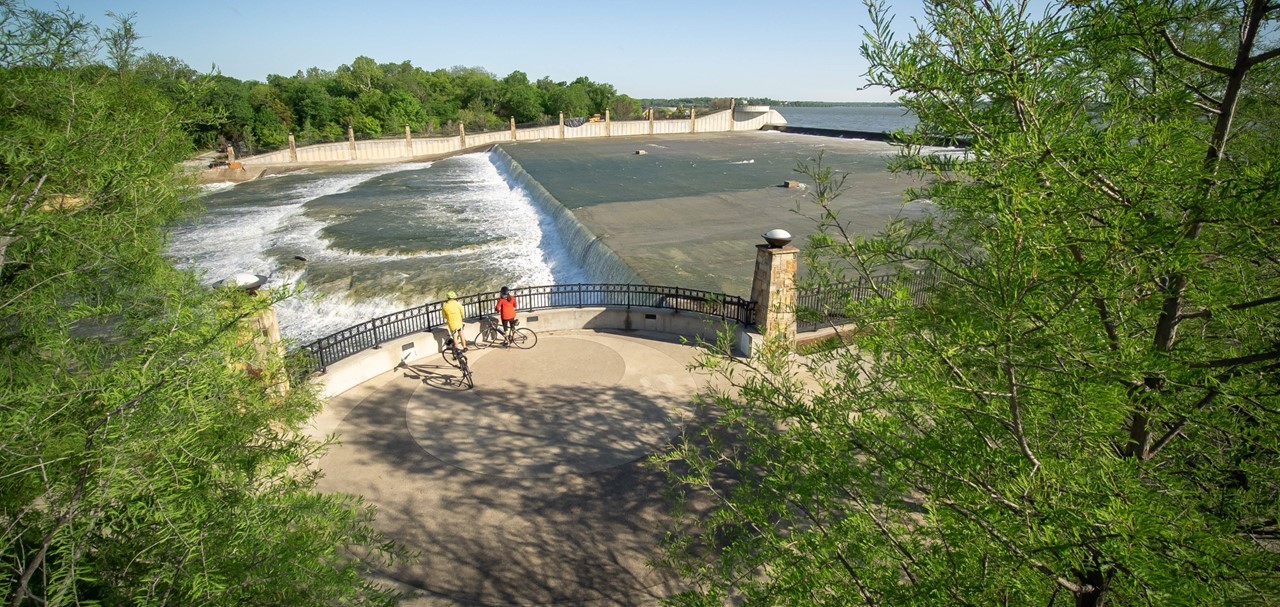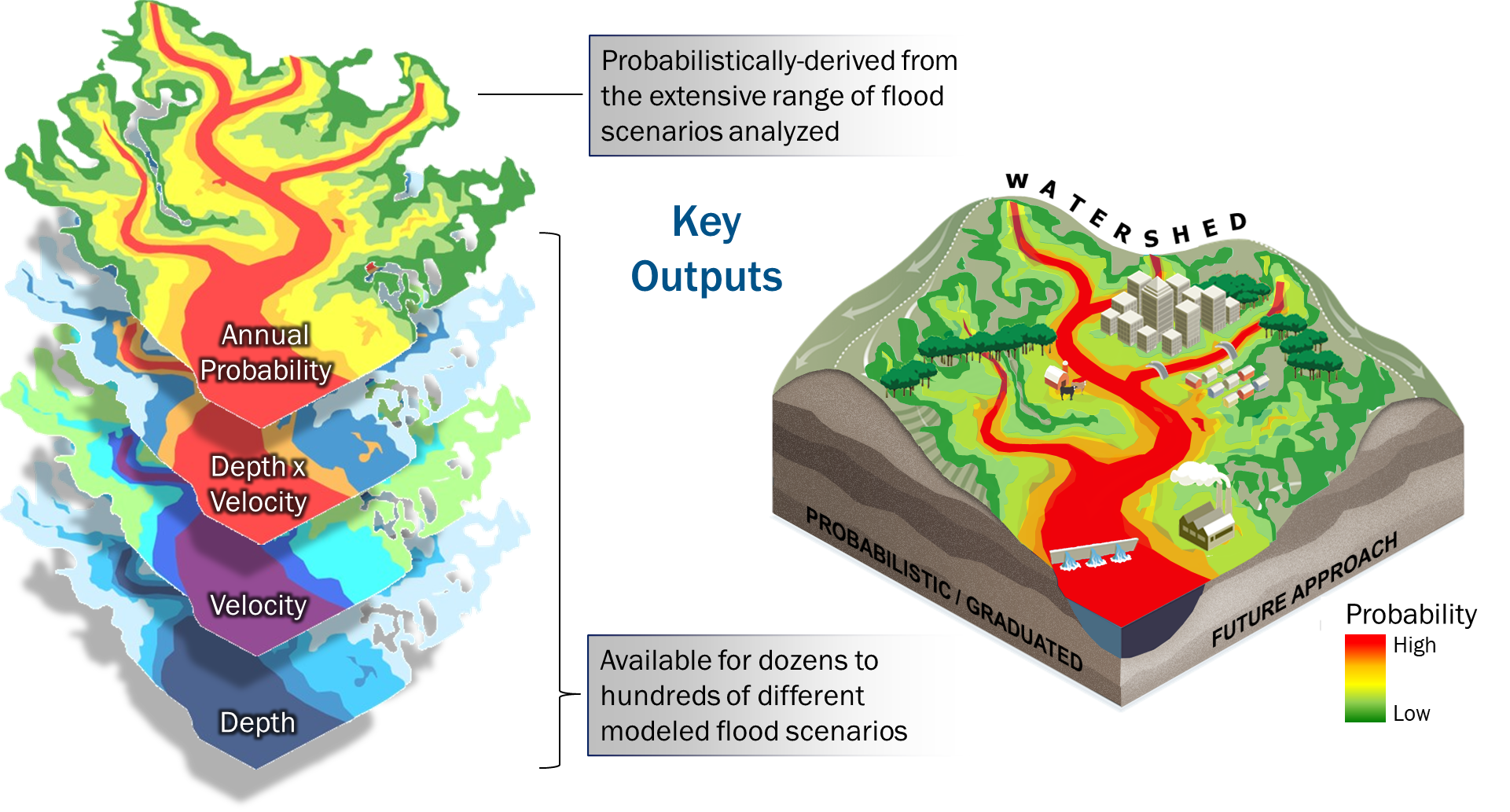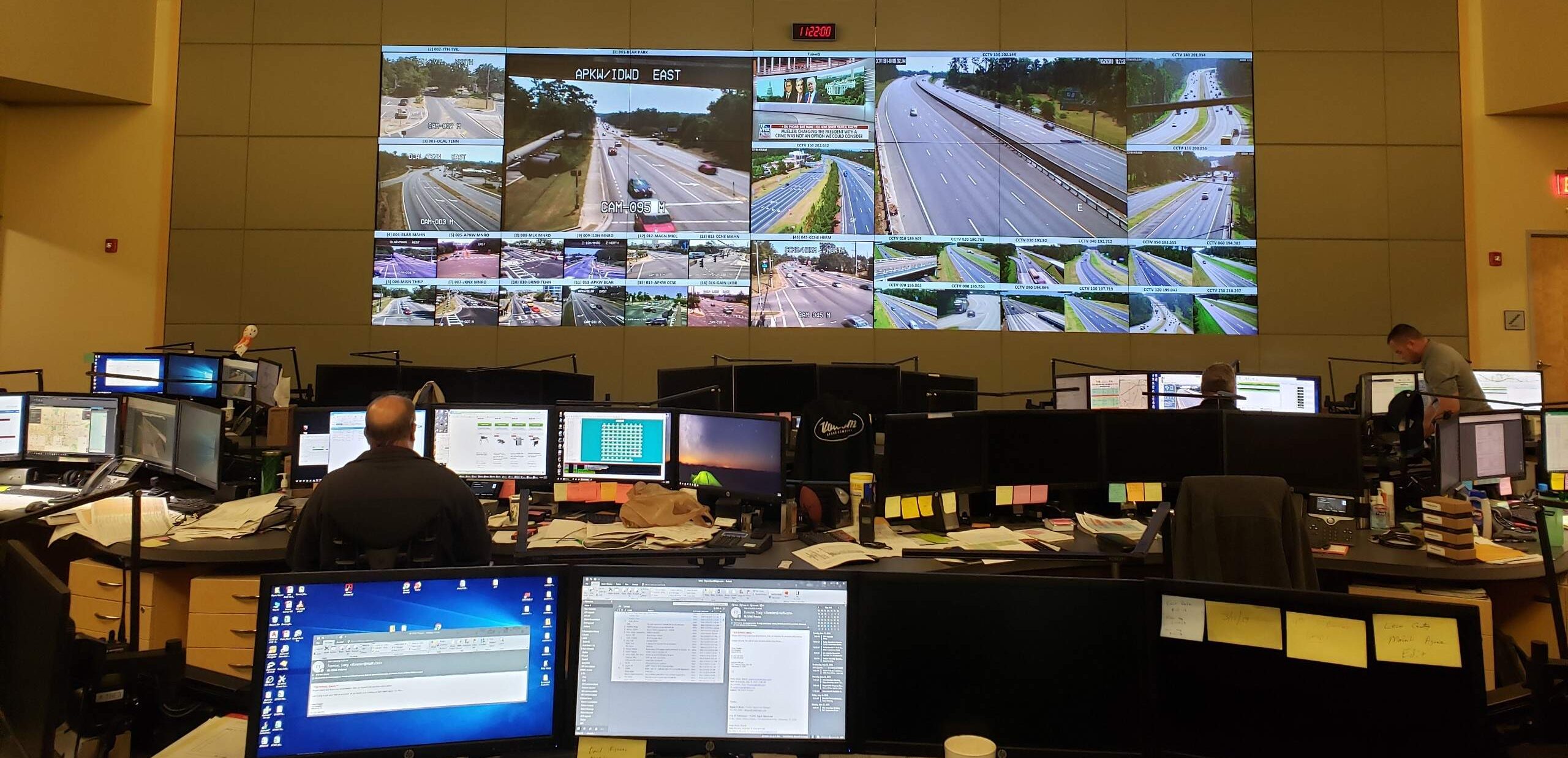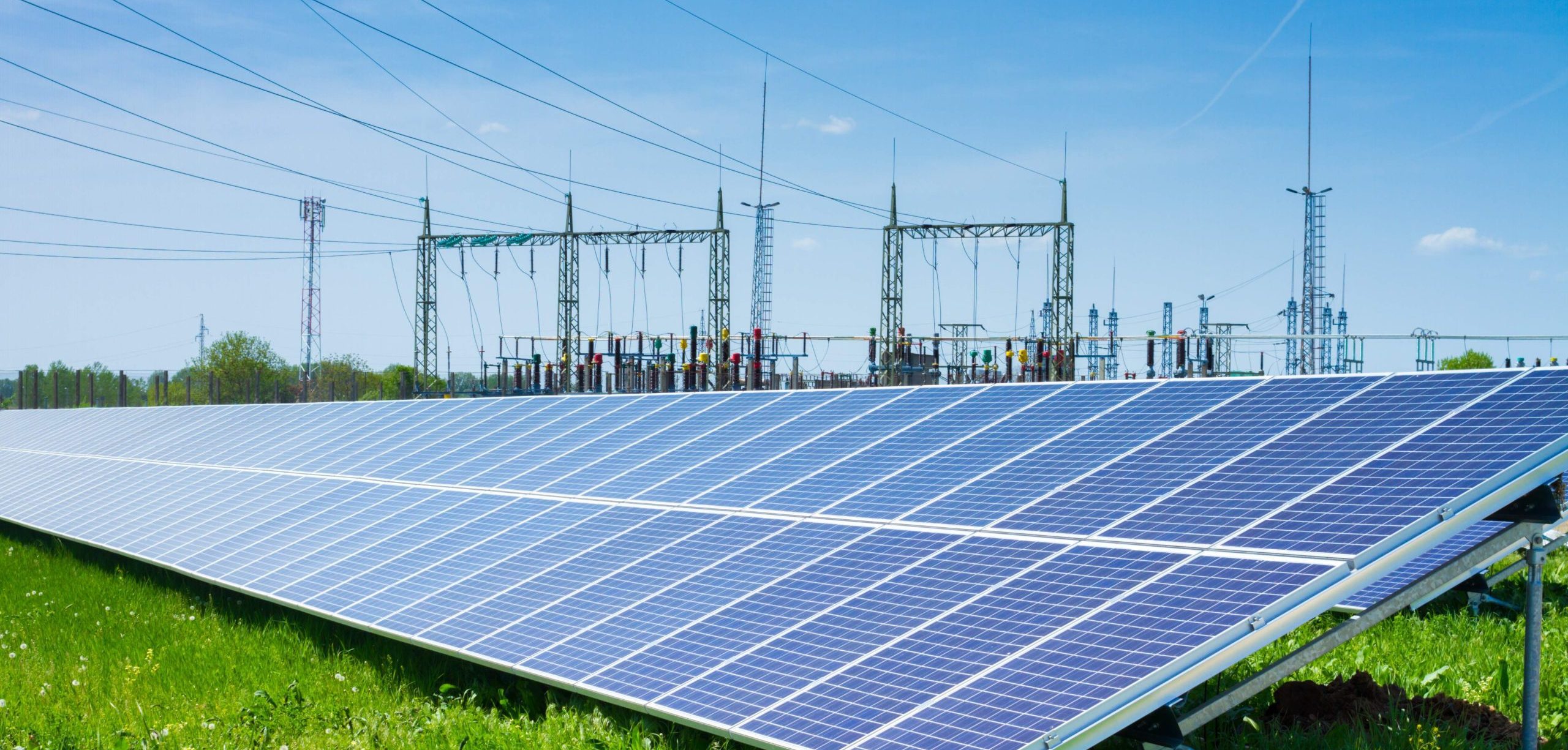Building Resilience: How Halff Is Safeguarding Lives and Community Infrastructure
In an era marked by increasingly frequent and severe natural disasters, infrastructure resilience is no longer a luxury — it’s a necessity. At Halff, resilience is a guiding principle that informs our work across flood modeling, transportation systems and energy infrastructure. Through our multidisciplinary approach and deep technical expertise, Halff is helping communities prepare for, withstand and recover from disruptive events.
Flood Modeling: Turning Data Into Action
This conceptual diagram shows probabilistically-derived outcomes produced by the Future of Flood Risk Data (FFRD) modeling sequence. Image source: hec.usace.army.mil
Flood resilience begins with understanding risk. Halff’s Water Resources and GIS teams are at the forefront of flood modeling and mapping, using advanced tools to help communities visualize and mitigate flood hazards. From historical FEMA work to cutting-edge vulnerability assessments, our experts are leveraging hydrologic and hydraulic modeling, GIS-based mapping and forecasting systems to support smarter planning and faster recovery.
In Central Texas, Halff has worked with Hays County — one of the fastest-growing counties in the U.S. — to implement a comprehensive flood resilience strategy. This includes updated floodplain mapping, stream crossing assessments, flood monitoring dashboards and drainage criteria manuals. These efforts have helped the county secure mitigation funding and improve public safety in flash flood-prone areas.
Projects like the Blanco Riverine improvements in San Marcos and channel enhancements in El Campo showcase Halff’s ability to take concepts from planning through construction. These initiatives have removed hundreds of structures from flood risk zones and were made possible through strategic grant funding and collaboration across Halff’s full-service teams.
Transportation Resilience: Keeping Communities Connected
Transportation systems are the lifelines of modern society, and Halff is committed to making sure they remain functional during and after disruptive events. Our intelligent transportation systems (ITS) and transit teams are deploying resilient infrastructure that can withstand hurricanes, ice storms and other extreme conditions.
In Florida, Halff has helped implement a statewide fiber optic network that supports real-time traffic management and emergency response. These underground, non-metallic systems are designed for durability and redundancy, making sure communications remain intact even when disaster strikes.
Transit resilience is also a key focus. Halff is working to elevate public transportation as a central component of resilient urban planning. From multimodal terminals in San Antonio to integrated rail and bus systems in Austin, our transit leaders are advocating for infrastructure that offers redundancy, equity and adaptability. As climate events become more economically disruptive, cities must diversify their mobility options to avoid paralysis during emergencies.
Energy Resilience: Powering Through the Storm
Halff’s Energy practice is tackling one of the most critical aspects of resilience — securing reliable power delivery. With decades of experience in electric utilities, our team understands the vulnerabilities of the grid and the strategies needed to fortify it.
From wildfire prevention to winter storm hardening, Halff is helping utilities implement technologies such as AI-enabled smoke detection, fireproofing materials and covered conductors. Vegetation management and undergrounding lines are also part of the toolkit, though cost and community acceptance remain key considerations.
During events like Winter Storm Uri, millions lost power across Texas. Halff’s experts have responded by designing systems that prioritize critical loads, enable sectionalization and incorporate smart grid technologies. Tools such as Fault Location Isolation and Service Restoration (FLISR) and smart meters are reducing outage durations and improving response times.
Halff is also exploring microgrids and renewable energy integration as future growth areas. These decentralized systems offer enhanced reliability and are increasingly being adopted by military installations, municipalities and private sector clients.
A Unified Vision for Resilience
Across all sectors, Halff’s resilience strategy is rooted in collaboration, innovation and long-term strategic thinking. Whether it’s modeling future flood scenarios, designing multimodal transit hubs or hardening the electric grid, our teams are working together to build infrastructure that can adapt to whatever the future brings.
Learn more about Halff’s unique resilience services by viewing our brochure.
Take the first step in resilience planning for your community by contacting Halff’s Resilience Market Leader Sean Lahav, MPA, WEDG (slahav@halff.com).







